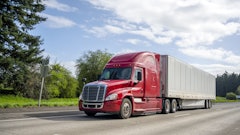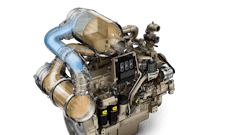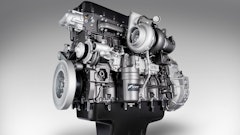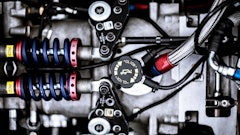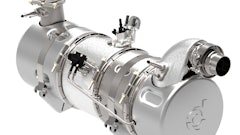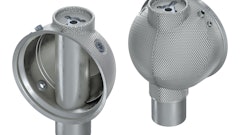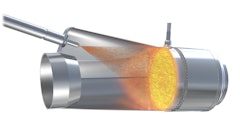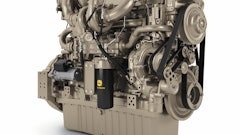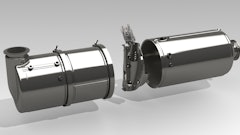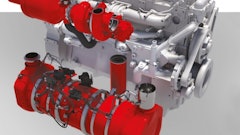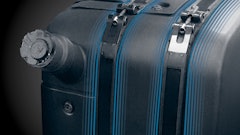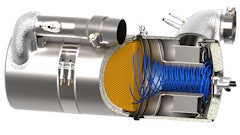As the new Tier 4-compliant equipment starts to roll off assembly lines, equipment manufacturers are anxiously waiting to see how they will be received by the farmers and contractors. Despite price increases of 5 to 15%, they believe farm equipment sales will be strong thanks to an agricultural economy buoyed by food shortages and heightened demand for crop-based fuels like ethanol. They are even seeing glimmers of hope in the recession-plagued construction industry.
“There was a great sense of confidence at CONEXPO-CON/AGG,” says Charlie O’Brien, vice president of agricultural services for the Association of Equipment Manufacturers (AEM). “Vendors were upbeat and deals were getting done. I think people are starting to see the light at the end of the tunnel.”
Although the construction industry is still on the long road to recovery, many of the projects being awarded are government projects that often include incentives or requirements for the use of low-emission equipment.
“Customers are recognizing that having Tier 4 machines in their fleets creates opportunities to compete for some government-funded contracts and operate in more government-regulated jobsites,” says Tim O’Brien, marketing manager, Case Construction Equipment.
The most comprehensive and costly regulations to date
The Tier 4 regulations are the most comprehensive and costly off-highway regulations ever implemented by the federal Environmental Protection Agency (EPA). The first wave of interim regulations, impacting equipment powered by engines above 175 hp (130 kW), took effect at the start of this year. A second wave of interim regulations, impacting equipment powered by engines between 75 and 175 hp (56-130 kW), will take effect next January. These interim regulations give engine and equipment manufacturers some flexibility in meeting Tier 4’s nitrogen oxides (NOx) and hydrocarbon (HC) emission standards. That flexibility will end when the final Tier 4 regulations are implemented in 2014.
When EPA adopted the rules in 2004, it estimated the new regulations will cost equipment manufacturers and end-users $2 billion per year and add, on average, 20% to the cost of an engine and 3% to the cost of equipment. Engine and equipment manufacturers have long contended that EPA low-balled its estimates, and while manufacturers are reluctant to discuss costs, it appears they were right.
“When we looked at the cost to equipment manufacturers it has been in the 5% to 15% range for the entire piece of equipment,” O’Brien says.
New technologies prompt redesigns
In order to meet the new emission requirements, most equipment manufacturers relied on two different technologies: exhaust gas recirculation (EGR), which recirculates exhaust gases to reduce NOx emissions, and SCR, a European technology that uses a chemical reagent, diesel exhaust fluid, to reduce nitrogen oxides. Both technologies require engine and equipment modifications. EGR requires the addition of manifolds, plumbing and a larger cooling system. SCR needs an additional fuel tank to hold the diesel exhaust fluid. While both of these technologies have been proven in on-road applications, they present unique challenges for the off-highway market, which utilizes nearly six times as many engine families as the on-highway industry. In addition, off-highway market is dominated by small businesses that have little or no on-highway experience.
“There has been a real scurry of activity over the last two years with some companies spending half of their research and development budgets just on Tier 4 compliance,” O’Brien says. “They had to do a lot of redesign.”
Joe Suchecki, a spokesperson for the Engine Manufacturers Association, agrees. “The biggest challenge was integrating the new aftertreatment devices into the design and operation of the very large numbers of nonroad equipment types,” he says. “Engine and equipment manufacturers had to ensure the placement and operation of the emissions control equipment would not impact the operation and function of that particular piece of nonroad equipment.”
Some engine families to disappear
Equipment manufacturers have also had to deal with a dwindling number of engine types.
“Engine manufacturers had to review their current engine families and determine which ones to keep and which ones to eliminate given the costs to upgrade and certify engine families to the new standards,” Suchecki says.
Design challenges will be even greater for the manufacturers of small off-highway equipment, who are now working to meet their Jan. 1, 2012 deadline.
“Installation space is more of a challenge for applications in the 75-173 horsepower band,” says Clint Schroer, communications manager for Cummins Off-Highway. To help small equipment manufacturers meet the challenge, Cummins developed a space-saving compact catalyst that can be installed separately or as part of a combined catalyst-and-muffler unit.
“This technology ensures OEMs will not need to make major changes to install our Tier 4 Interim solution in their application,” Schroer says.
John Deere worked to minimize the impact of the new regulations by using a building-block approach to systemically adopt technologies that would minimize the need for equipment redesigns.
“We have optimized the package size for Tier 4 engines so that they require space similar to the Tier 3 models they replace,” says Doug Laudick, manager of product planning at John Deere Power Systems. “The most notable change to the engine envelope is the addition of the exhaust filter, which in most applications occupies the space previously taken by the muffler.”
Sales pick up
The new Tier 4 standards did spark a flurry of equipment purchases at the end of 2010 as farmers and contractors sought to avoid the looming price increases and the potential glitches that occur when new technologies are introduced.
“We saw very strong Tier 3 sales at the end of 2010 and a certain amount of that is due to people buying Tier 3 before Tier 4 came out,” says EMA’s O’Brien, adding that he is not sure that means there will be a significant drop in sales, especially among farmers. “The agricultural economy is very strong and therefore people are not hesitating to buy tractors and combines.”
Case did not see a significant number of contractors purchase construction equipment before the Tier 4 regulations took effect, which Case’s O’Brien credited to the work Case did beforehand to educate dealers and key customers. “We helped to convince them to accept and anticipate the additional benefits they will get with the new Tier 4 products, including better fuel efficiency.”
According to O’Brien, contractors purchasing the new SCR-equipped F Series wheel loaders will experience a 10-percent savings in fuel costs, while the new EGR-equipped C Series excavators, which also feature an upgraded hydraulic system, will be 10 percent more fuel-efficient than Case’s B Series excavators.
Laudick says that in addition to fuel savings, the new John Deere engines feature the JDLink telematics system that allows end-users and technicians to remotely monitor engine conditions, perform engine diagnostics and make some repairs.
And, as with many engine manufacturers, Deere has continues to work with equipment manufacturers. “We have an expanded application engineering department to support OEM integration of Tier 4 interim engines and our distributor network has its own application engineering resources to help OEMs achieve integration that maximizes performance, operator convenience, fuel economy and overall value” Laudick says.






